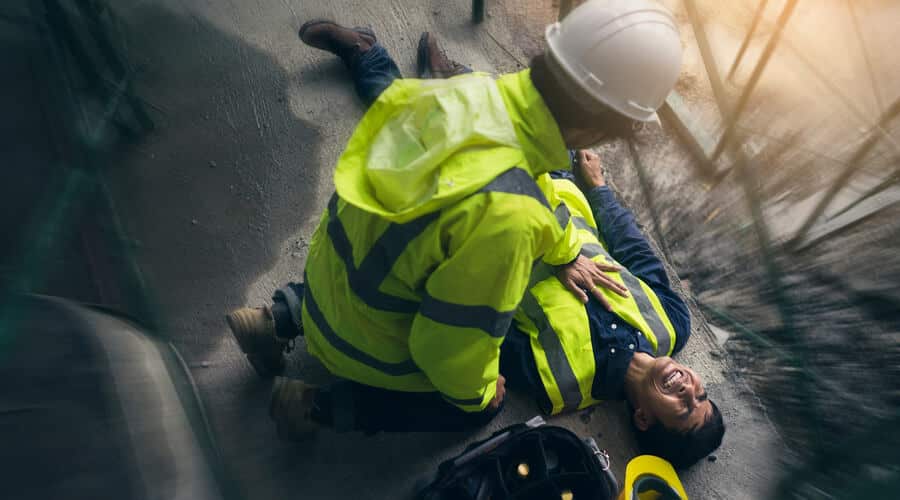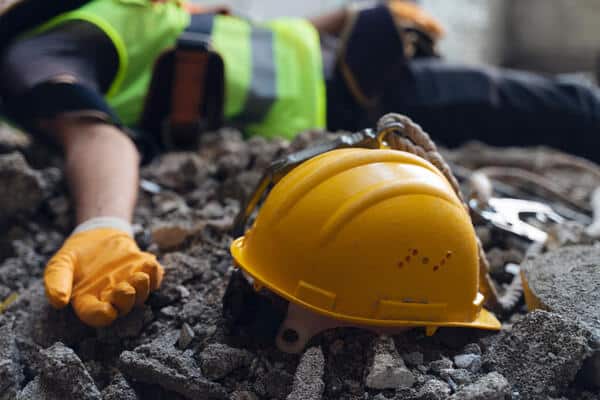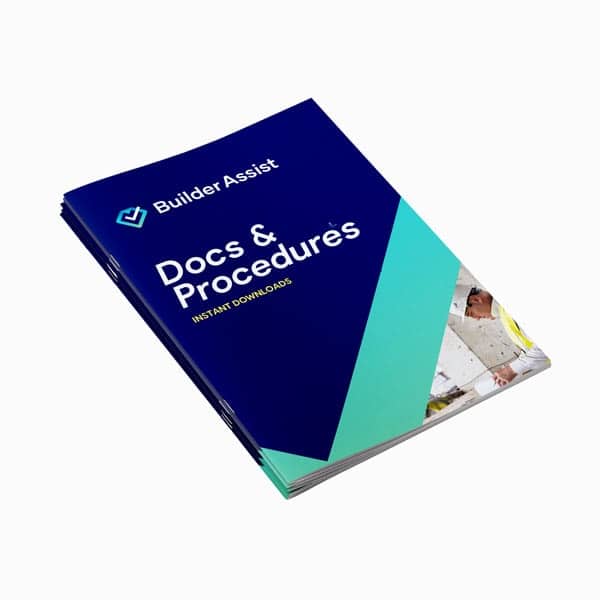
If you're a tradesperson, and you need to know 'what is the definition of a WHS incident', we've outlined it for you in this blog.
The construction industry is a dynamic and high-energy sector that plays a fundamental role in shaping our physical environment. Yet, on construction sites, the risk of Workplace Health and Safety (WHS) incidents looms large. These incidents encompass a range of unplanned events that have the potential to result in harm, injury, or damage.
Understanding what is the definition of a WHS incident in the construction industry is paramount. It not only assists you with compliance, but also protects the well-being of workers and the integrity of projects.

What is the definition of a WHS incident?
What is the definition of a WHS Incident?
A WHS incident refers to any unplanned event or circumstance in a workplace that has the potential to cause harm, injury, illness, or damage.
These incidents can range from minor mishaps to severe accidents. These can result in injuries, near misses, property damage, or environmental harm.
In the construction industry, understanding WHS incidents is paramount to ensuring the safety of workers and the public.
Types of WHS Incidents
WHS incidents encompass a spectrum of occurrences, varying in severity:
- Minor Incidents: These are low-risk events that may not lead to immediate harm but could potentially escalate if left unaddressed. Examples include minor slips, trips, or equipment malfunctions.
- Severe Incidents: These are more serious events that result in significant harm, injury, or damage. This category includes falls from heights, electrical accidents, collapses, chemical exposures and fatalities.
These incidents can result from factors. This includes inadequate training, improper use of equipment, lack of safety protocols, adverse weather conditions, and communication breakdowns.
Impacts of WHS Incidents
The consequences of WHS incidents in construction can be profound.
Beyond physical injuries, incidents can disrupt project timelines, increase costs due to medical expenses and legal proceedings, damage equipment and property, and even lead to loss of life.
Furthermore, incidents erode workforce morale and public trust, impacting the industry's reputation.
How to Report a WHS Incident
Reporting a WHS incident involves a structured process:
- Immediate Action: Ensure injured parties receive appropriate medical attention. Secure the area to prevent further harm or accidents.
- Notify: Promptly inform your supervisor or manager about the incident. If you're self-employed, notify the relevant parties involved in the project.
- Documentation: Document all relevant details about the incident, including the date, time, location, people involved, and a brief description of what happened.
Your Safety Management Plan should include an Incident Management and Incident Investigation Report.
Builder Assist Safety Management Plans include both. They are compliant, and you can use them to report and document both minor and severe WHS incidents.
Who to notify if you’re a Principal Contractor or self-employed tradesperson
When reporting a Workplace Health and Safety (WHS) incident as a self-employed person or principal contractor, the relevant parties you need to notify can vary depending on your jurisdiction, the severity of the incident, and the specific circumstances. However, here are some common parties you might need to consider notifying:
Work Health and Safety Authority
In many jurisdictions, especially for serious incidents, injuries, or fatalities, you may be legally required to report the incident to the relevant Work Health and Safety Authority. This is a crucial step to ensure compliance with regulatory requirements and to initiate any necessary investigations. You can check with your state jurisdiction, which is listed on our State Work Safety Authorities page.
Emergency Services
If the incident involves immediate danger, serious injuries, or requires medical attention, you should call emergency services (such as paramedics or firefighters) as needed.
Site Supervisor or Manager
If you are working on a construction site or have personnel under your supervision, notifying the site supervisor or manager is essential. They can take immediate actions to address the situation, secure the area, and ensure the safety of workers and others.
Affected Workers
If other workers were present at the time of the incident or were directly affected by it, you should notify them about the incident. This is important to ensure their safety and prevent further incidents.
Clients or Project Owners
If you are working on a project for a client or under a contract, you should notify the client or project owner about the incident. This allows them to assess the impact on the project's timeline, budget, and scope.
Insurance Provider
If you have liability insurance or workers' compensation insurance, you may need to inform your insurance provider about the incident, especially if it could lead to a claim.
Subcontractors and Suppliers
If there were subcontractors, suppliers, or other parties involved in the project, you might need to notify them about the incident. This could affect their work or their own safety considerations.
Health and Safety Representatives
In some cases, especially on larger construction sites, there might be health and safety representatives or committees. Notifying them can help ensure that proper procedures are followed and that the incident is thoroughly documented.
Internal Reporting
If you have established internal reporting procedures or guidelines, make sure to follow them and notify the relevant internal stakeholders.
Regulatory Authorities
Depending on the nature of your work and the industry you're in, there might be specific regulatory bodies or industry associations that you need to notify about incidents.
Remember that timely and accurate reporting is crucial for the safety of everyone involved and for compliance with legal requirements. Familiarise yourself with the reporting obligations and procedures in your State or Territory to ensure that you take the necessary steps in case of a WHS incident.
Responsibility for Reporting
Various parties bear the responsibility of reporting WHS incidents:
- Workers: Workers are obligated to report incidents they witness, experience, or are involved in.
- Employers: Employers must create an environment where employees feel comfortable reporting incidents without fear of reprisal. They should also ensure that proper reporting channels and procedures are in place.
- Principal Contractors: Principal contractors on construction sites have a pivotal role in incident reporting, as they coordinate the work of various contractors and subcontractors. They must ensure that all incidents are documented and reported promptly.
In a nutshell, WHS incidents encompass a wide range of events that have the potential to cause harm or damage.
In the construction industry, where hazards are prevalent, understanding, reporting, and addressing these incidents is a shared responsibility that underpins a safer and more secure workplace.
Remember, when in doubt, report. It's not just a practice; it's a commitment to ensuring the well-being of everyone on the job site.

Safety Management Plans (WHS)
Specifically designed for each trade starting up a business, these Work Health Safety Management Plans or WHS Management Plans, provide support with the management of Work Health & Safety in the workplace. Also referred to as Occupational Health & Safety (OH&S) the material provided in this section will assist with WHS/OHS management and training requirements for the workplace.


